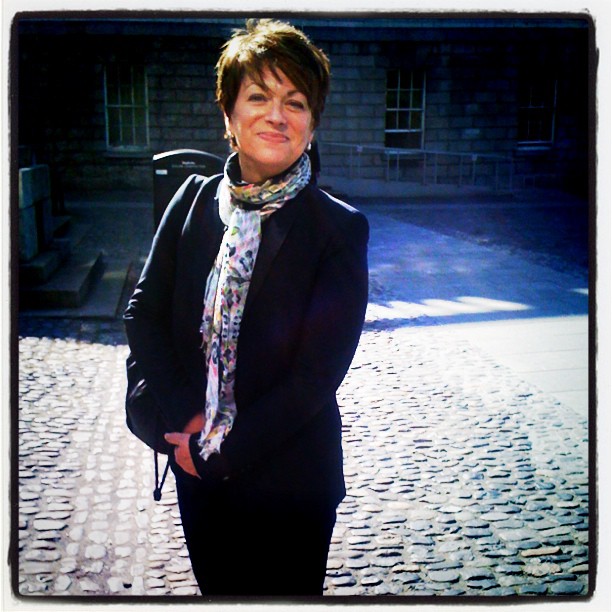In early 2013, while pursuing a doctoral degree in theological anthropology at Trinity College in Dublin, Ireland, Lynn Latchford began to experience some puzzling symptoms. Routine academic tasks suddenly became difficult. Mental fogginess was accompanied by fatigue, weight gain and changes in her sense of smell, taste and hearing. Doctors attributed her symptoms to a chronic thyroid disorder and stress.

As her symptoms worsened, Lynn took leave from her studies and moved back to the United States, settling in Durham. Her symptoms persisted but no answers were found. In March of 2014, she came to UNC Hospital thinking she was having a heart attack, but a thorough assessment revealed a different diagnosis: a tumor on her brainstem. The mass was wrapped around several nerves and an artery. It was causing dangerous disruptions in her endocrine system. And it was inoperable.
“The tumor was in the least accessible part of my brain,” says Latchford. “The Tumor Board at the N.C. Cancer Hospital reviewed my case carefully, and they told me it was too dangerous even to biopsy. But radiation oncologist Dr. Joel Tepper told me they had one option for me: 3D Conformal Radiation Therapy.”
3D Conformal Radiation Therapy (3D-CRT) uses a set of CT images to identify both the tumor and the critical normal tissue structures that need to be avoided. Radiation beams of varying shapes are designed to enter the patient from multiple angles and “hit” the tumor while avoiding nearby healthy tissues.
In Latchford’s case, a specialized form of 3D-CRT treatment known as Intensity-Modulated Radiation Therapy (IMRT) was ultimately used. With IMRT, the shapes of the radiation beams are varied as well as their “strengths” or intensities. This further guarantees that the tumor receives the maximum amount of radiation, while the surrounding normal tissues receive the least possible exposure.
IMRT delivered radiation to Latchford’s tumor in a way that minimized exposure of the delicate nerves and the artery it enveloped. A custom-molded mesh helmet was necessary to immobilize her head and maintain it in the same position throughout each treatment.
“The first time I saw the radiation machine was when I walked in for my first treatment, and I was overwhelmed,” recalls Latchford. “Although I had read pamphlets about what to expect, that did not prepare me for the sensory overload I experienced when I saw that enormous machine.”
Latchford explains the role that N.C. Cancer Hospital staff played in alleviating the stress she experienced during her treatment. “I didn’t have any family here with me,” she says. “I can’t begin to tell you how important the caring staff was for me. My entire experience was one of gentle caring. They turned a frightening time into an almost positive experience.”
With radiation treatment behind her, Latchford is now busy with the work of recovery. She still suffers from some short term memory problems and deficits in attention and processing. She is grateful for the resources of UNC Lineberger’s Comprehensive Cancer Support Program such as integrative medicine and survivorship counseling. “I’m working with Dr. Leeza Park to process my feelings and adjust to the reality of my situation,” she says. “Starting small and going slowly, I am learning what I still can do.”
Among the many things that Latchford can still do is tell a story with photographs and video. She is currently producing a video to help explain IMRT to other patients facing this type of treatment.
“The anxiety I experienced at the start of my treatment was significant, and the helmet I had to wear to immobilize my head was frightening. The pamphlets about IMRT were great, but it was difficult for me to process and absorb written material following my diagnosis. I thought that a video about the experience might help a patient coming after me.”
With the help of Dr. Tepper and the team of N.C. Cancer Hospital radiation therapists, Latchford filmed her treatment from a variety of perspectives. Some wide angle shots show the enormity of the radiation machine, others show Latchford’s view of the machine via a camera on her chest. A camera strapped to the machine as it rotates 360º around her body shows the machine’s point of view.
Latchford hopes the video will help patients coming after her, but right now, it’s helping her recover some of the person she was before the tumor interrupted her life. “I was using my photography and videography skills for my research in Dublin, and I am still able to use those skills,” she says happily. “Working on this project is helping me recover some of the cognitive function that diminished during my illness. I am building a new life around the new me.”
